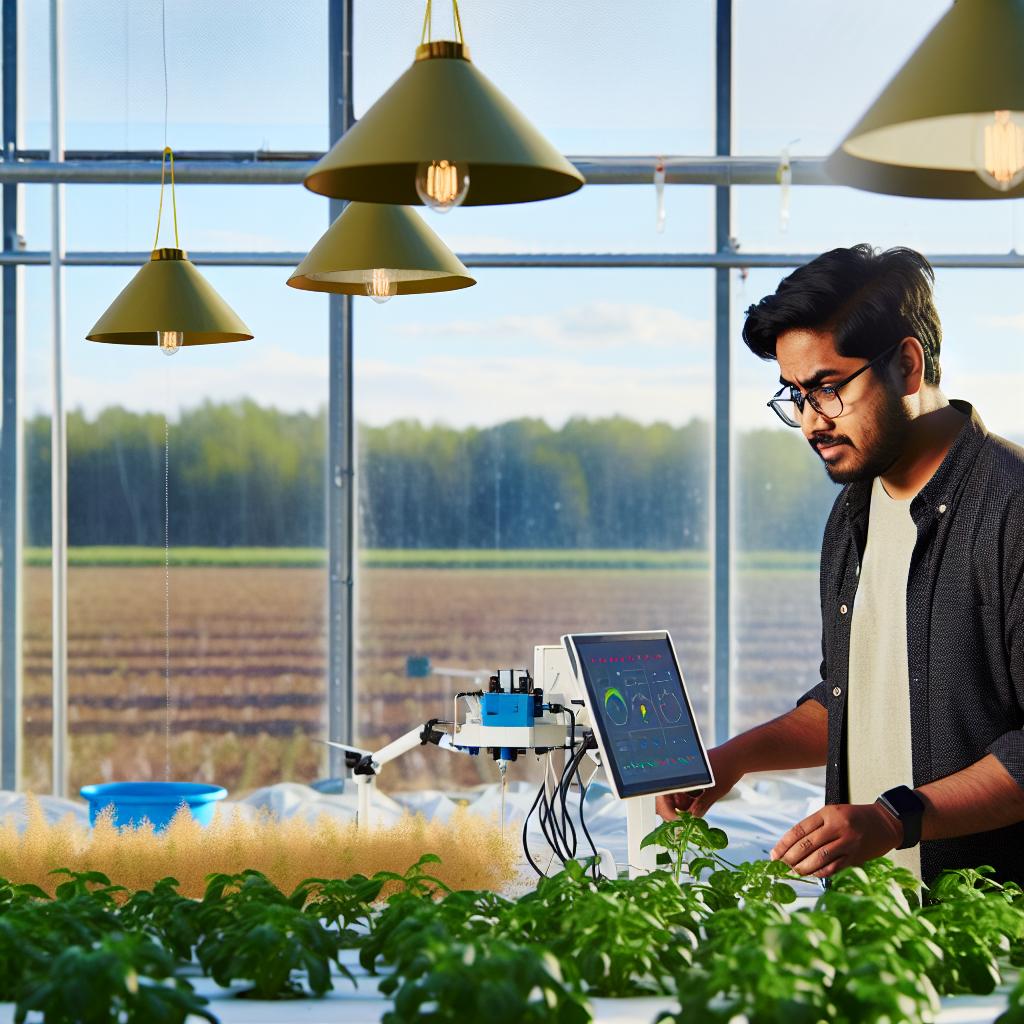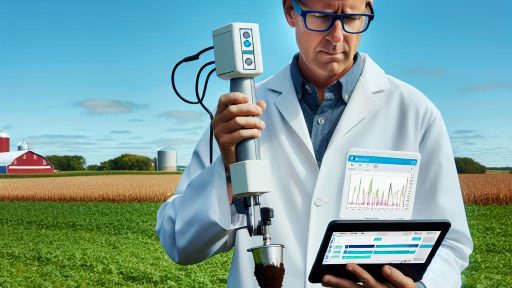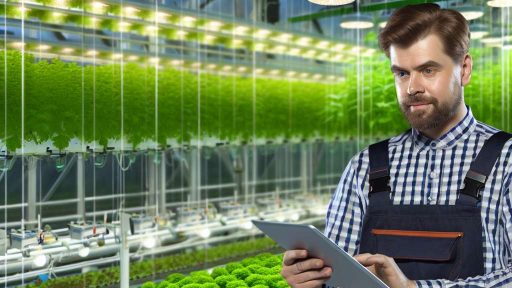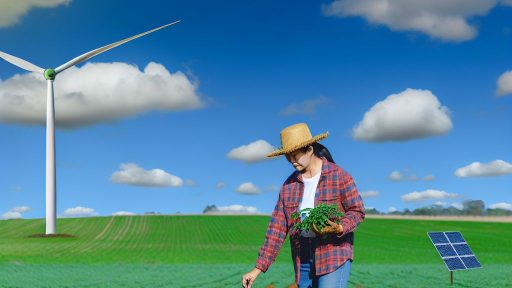Introduction to Smart Farming Solutions and Controlled Environment Agriculture
Smart farming solutions redefine modern agriculture.
These innovative practices integrate technology into farming processes.
They aim to enhance productivity and efficiency.
Controlled environment agriculture plays a pivotal role.
Definition of Controlled Environment Agriculture
Controlled environment agriculture, or CEA, involves growing plants in a controlled setting.
This approach optimizes environmental factors like light, temperature, and humidity.
It allows for year-round crop production regardless of outside conditions.
CEA systems can be as simple as greenhouses or as complex as vertical farms.
Benefits of Smart Farming Solutions
Smart farming solutions offer several advantages.
They help reduce resource waste and environmental impact.
Additionally, these solutions maximize crop yield and quality.
Farmers can monitor and manage their operations remotely.
Technologies Driving Smart Farming
Numerous technologies contribute to smart farming solutions.
- Internet of Things (IoT) devices collect data from the field.
- Artificial intelligence analyzes this data for informed decision-making.
- Drones assist in monitoring crop health and applying treatments.
Challenges in Implementation
Implementing smart farming solutions comes with challenges.
High initial costs can deter some farmers from adoption.
Transform Your Agribusiness
Unlock your farm's potential with expert advice tailored to your needs. Get actionable steps that drive real results.
Get StartedMoreover, there is a learning curve associated with new technologies.
Data security and system integration are also critical concerns.
Future Trends in Controlled Environment Agriculture
The future of CEA looks promising and innovative.
Advancements in automation will likely reduce labor costs.
Furthermore, sustainable practices will gain importance.
As technology evolves, CEA systems will become more efficient and accessible.
Key Technologies Driving Controlled Environment Agriculture
Introduction to Controlled Environment Agriculture
Controlled Environment Agriculture (CEA) revolutionizes traditional farming practices.
It focuses on optimizing growing conditions for plants and crops.
By utilizing advanced technologies, CEA enhances yield quality and quantity.
Furthermore, this approach efficiently uses resources like water and nutrients.
Smart Sensors and Automation
Smart sensors play a crucial role in CEA.
They monitor environmental variables such as temperature and humidity.
This data allows farmers to make informed decisions quickly.
Additionally, automation systems can adjust settings in real-time.
This ensures that plants grow under ideal conditions consistently.
Hydroponics and Aeroponics Systems
Hydroponics eliminates the need for soil by growing plants in nutrient solutions.
This method maximizes space and resource efficiency.
Aeroponics further enhances this by misting roots with nutrient solutions.
Both systems significantly reduce water usage compared to traditional agriculture.
Moreover, they allow for year-round crop production independent of climate.
Artificial Lighting Solutions
Artificial lighting, especially LED technology, supports plant growth indoors.
Light-emitting diodes deliver precise wavelengths to optimize photosynthesis.
This technology helps produce consistent yields regardless of external weather.
Additionally, adjustable lighting allows for various growth stages.
Showcase Your Farming Business
Publish your professional farming services profile on our blog for a one-time fee of $200 and reach a dedicated audience of farmers and agribusiness owners.
Publish Your ProfileConsequently, farmers can control growth cycles to meet market demands.
Data Analytics and AI
Data analytics enhances decision-making in CEA.
Artificial intelligence analyzes complex datasets from smart sensors.
This analysis provides insights into optimizing growth conditions.
As a result, farmers can predict and respond to potential issues swiftly.
Overall, AI improves operational efficiency and crop yields.
Integration with IoT
The Internet of Things (IoT) connects devices for improved communication.
In CEA, IoT devices gather and share real-time data seamlessly.
This connectivity allows for remote management of agricultural operations.
Farmers can monitor their systems from anywhere at any time.
This flexibility increases responsiveness to environmental changes.
Benefits of Controlled Environment Agriculture for Sustainable Farming
Precision in Resource Management
Controlled environment agriculture (CEA) enhances resource efficiency.
It enables precise control over water and nutrients.
This precision reduces waste and environmental impact.
Year-Round Crop Production
CEA allows for continuous production throughout the year.
This consistency meets growing food demands effectively.
Additionally, it reduces the reliance on seasonal cycles.
Enhanced Crop Quality and Yield
The controlled conditions promote optimal plant growth.
Crops grown in CEA systems often exceed traditional yields.
Furthermore, the quality of produce tends to improve significantly.
Pest and Disease Management
CEA minimizes exposure to pests and diseases.
Growers can implement integrated pest management more effectively.
This consequently decreases the need for chemical interventions.
Reduced Land Footprint
CEA systems maximize food production on smaller land areas.
This is crucial in urban environments with limited space.
As a result, CEA contributes to urban sustainability initiatives.
Energy Efficiency and Sustainability
Many CEA systems utilize renewable energy sources.
These systems also employ energy-efficient technologies.
Consequently, they reduce the overall carbon footprint of farming.
Adaptability to Climate Change
CEA can provide stability in fluctuating weather conditions.
This adaptability ensures food security despite climate challenges.
It thereby supports resilient agricultural practices.
See Related Content: Blockchain Technology Improving Supply Chain Transparency For Farmers
Implementation of IoT and Data Analytics in Smart Farming
Integration of IoT Technology
The Internet of Things (IoT) plays a crucial role in smart farming.
It connects various devices, enabling real-time monitoring of farms.
Farmers can utilize sensors to collect data on soil conditions.
These sensors also track weather patterns and crop health.
Consequently, IoT technology enhances decision-making processes.
For example, Bartley Farms leverages IoT to optimize irrigation schedules.
Utilizing Data Analytics
Data analytics transforms raw data into actionable insights.
Showcase Your Farming Business
Publish your professional farming services profile on our blog for a one-time fee of $200 and reach a dedicated audience of farmers and agribusiness owners.
Publish Your ProfileFarmers analyze data to improve crop yields and reduce costs.
Through predictive analytics, they can anticipate pest outbreaks.
This method allows for timely intervention, minimizing damage.
Moreover, data-driven strategies lead to efficient resource management.
AgriTech Innovations showcases data analytics for optimizing fertilizer use.
Benefits of Smart Farming Solutions
Smart farming solutions offer numerous advantages for agriculture.
Firstly, they increase productivity through precise farming techniques.
Secondly, they contribute to sustainability by reducing waste.
As a result, farmers experience improved profitability.
In addition, technology facilitates a better understanding of crop performance.
Overall, smart farming enhances the resilience of agricultural systems.
Challenges and Considerations
Despite benefits, challenges exist in implementing IoT and data analytics.
Data security remains a major concern in connected devices.
Farmers must also address the upfront costs of technology.
Training and education on these technologies are essential.
Partnerships with tech companies can help mitigate these challenges.
For instance, FarmTech Solutions offers training programs for farmers.
Gain More Insights: Integrating Biotechnology With Traditional Farming Methods
Role of Automation and Robotics in Controlled Environments
Introduction to Automation in Agriculture
Automation significantly enhances agricultural efficiency and productivity.
It reduces the need for human labor and minimizes errors.
Employing advanced technology is key for contemporary farmers.
Types of Automation Technologies
Drones serve multiple critical functions in agriculture.
They assist with crop monitoring and precision farming.
Robotic harvesters increase the efficiency of gathering crops.
Climate control systems ensure optimal growth conditions for plants.
The Role of Robotics
Robotics streamline labor-intensive tasks on farms.
These machines perform repetitive actions without fatigue.
For instance, robotic arms can transplant seedlings with precision.
Automation in irrigation allows for water conservation.
Benefits of Automation and Robotics
Cost savings are a significant advantage of automation.
Robots and automated systems reduce labor costs.
They increase yield through precise resource management.
Moreover, automation enhances data collection for better decision-making.
Real-World Applications
Many farms worldwide implement automation technologies.
For example, GreenFields Farm uses drones for crop surveillance.
Similarly, OceanSpray Orchards employs robotic harvesters for efficiency.
These applications demonstrate the effectiveness of combining technology with agriculture.
Challenges and Considerations
Despite their advantages, automation presents challenges.
The initial investment for advanced technology can be high.
Additionally, training workers to operate these systems is essential.
Showcase Your Farming Business
Publish your professional farming services profile on our blog for a one-time fee of $200 and reach a dedicated audience of farmers and agribusiness owners.
Publish Your ProfileFarmers must also consider maintenance and technical support.
The Future of Automation in Agriculture
The future of agriculture lies in expanding automated solutions.
As technology advances, automation will become more accessible.
Integrating artificial intelligence can further enhance efficiency.
Ultimately, the agricultural sector must adapt to these innovations.
Discover More: Implementing Drone Technology On Modern Farms

Case Studies: Successful Smart Farming Initiatives
Urban Green Spaces at FreshHarvest
FreshHarvest implemented vertical farming within urban settings.
They utilized hydroponics to grow crops with minimal space.
This method maximized yield while reducing resource consumption.
As a result, FreshHarvest increased fresh produce access for city residents.
Innovations in Hydroponics by AquaFarm
AquaFarm revolutionized hydroponic systems for large-scale operations.
They developed a patented nutrient delivery system to optimize plant growth.
This innovation reduced water usage by over fifty percent.
Consequently, AquaFarm significantly decreased operational costs.
Precision Agriculture at TerraTech
TerraTech integrated drones and IoT for precision agriculture.
This technology enhanced data collection on crop health and soil conditions.
Farmers received timely insights to make informed decisions.
Ultimately, TerraTech improved crop yields and reduced waste.
Sustainable Practices with GreenFields
GreenFields adopted controlled environment agriculture in greenhouses.
This initiative utilized climate control technologies to ensure optimal growth conditions.
They reduced pesticide use through integrated pest management practices.
In turn, the team promoted healthier produce and environmental sustainability.
Successful Partnerships at SmartFarm Network
SmartFarm Network partnered with local agronomists and tech experts.
Together, they created agronomic software to assist farmers.
This software optimized planting schedules and resource management.
Farmers reported increased efficiency and profitability through these tools.
Learn More: Choosing The Right Agricultural Drone For Your Farm
Challenges and Limitations of Controlled Environment Agriculture
High Initial Investment Costs
Implementing controlled environment agriculture often requires significant upfront investment.
Facilities demand advanced technology and infrastructure.
This includes systems for climate control, irrigation, and lighting.
Moreover, the initial costs can deter small-scale farmers.
Energy Consumption Concerns
High energy consumption poses a major challenge for these farming systems.
Climate control systems require consistent energy inputs.
As a result, energy costs can escalate rapidly over time.
Farmers must explore renewable energy options to mitigate these expenses.
Technology Reliance
Controlled environment agriculture is heavily reliant on technology.
Advanced tools and equipment are crucial for operation.
However, this reliance could lead to vulnerabilities.
Malfunctions or outages can disrupt production significantly.
Limited Crop Diversity
Not all crops thrive in controlled environments.
Showcase Your Farming Business
Publish your professional farming services profile on our blog for a one-time fee of $200 and reach a dedicated audience of farmers and agribusiness owners.
Publish Your ProfileThis limitation restricts the variety of produce that farmers can grow.
Some plants may not respond well to confined conditions.
Consequently, farmers may face challenges in catering to market demands.
Regulatory and Compliance Issues
Regulatory compliance can create another layer of complexity.
Different regions may impose diverse regulations on controlled environment agriculture.
Navigating these regulations can be time-consuming and costly.
Farmers must stay informed about local guidelines to avoid penalties.
Labor Engagement and Skill Gaps
Engaging skilled labor is essential for successful operations.
However, there may be a shortage of trained personnel.
This skill gap can create operational inefficiencies.
Investing in training programs can help bridge this divide.
Market Acceptance and Consumer Education
Market acceptance of products from controlled environments can be limited.
Consumers often need education about the benefits of these crops.
Building trust with consumers is critical for success.
Farmers should focus on transparent practices and communication.
Future Trends in Smart Farming and Controlled Environment Innovations
Adoption of IoT Technologies
Farmers increasingly incorporate Internet of Things (IoT) devices in their operations.
This technology enhances real-time monitoring of crop conditions.
Consequently, farmers make informed decisions to optimize growth.
Moreover, IoT applications improve water management and reduce waste.
Expand Use of Artificial Intelligence
Artificial intelligence (AI) increasingly shapes modern agriculture.
AI analyzes large data sets to provide actionable insights for farmers.
This boosts crop yield while minimizing input costs.
Additionally, robotic systems powered by AI automate labor-intensive tasks.
Integration of Renewable Energy Sources
Farmers are turning to renewable energy solutions for sustainability.
Solar panels and wind turbines power controlled environment agriculture systems.
This reduces reliance on fossil fuels and energy costs.
Furthermore, integrating renewable energy promotes environmental responsibility.
Vertical Farming Developments
Vertical farming is gaining traction in urban areas.
This method maximizes space by growing crops in stacked layers.
As a result, agricultural production increases in limited areas.
Urban communities benefit from faster access to fresh produce.
Enhanced Data Analytics Tools
Data analytics tools are becoming essential for smart farming.
Farmers utilize these tools to track growth patterns and predict yields.
Additionally, data-driven insights enhance decision-making processes.
This leads to improved efficiency and reduced risks in crop production.
Focus on Plant Genetics and Biotechnology
Biotechnology improves crop resilience to pests and environmental changes.
Farmers leverage genetically modified organisms (GMOs) for higher yields.
This advancement helps address global food security issues.
Moreover, improved plant genetics contribute to sustainable practices.
Additional Resources
Future food-production systems: vertical farming and controlled …
Showcase Your Farming Business
Publish your professional farming services profile on our blog for a one-time fee of $200 and reach a dedicated audience of farmers and agribusiness owners.
Publish Your Profile



